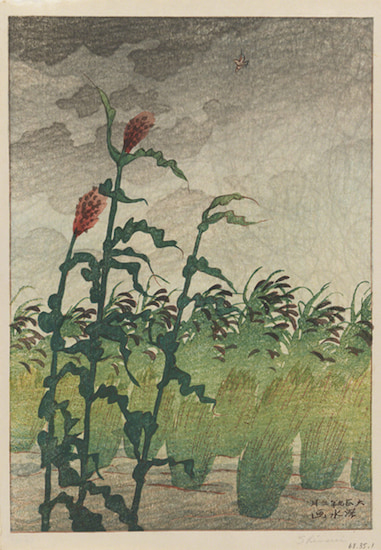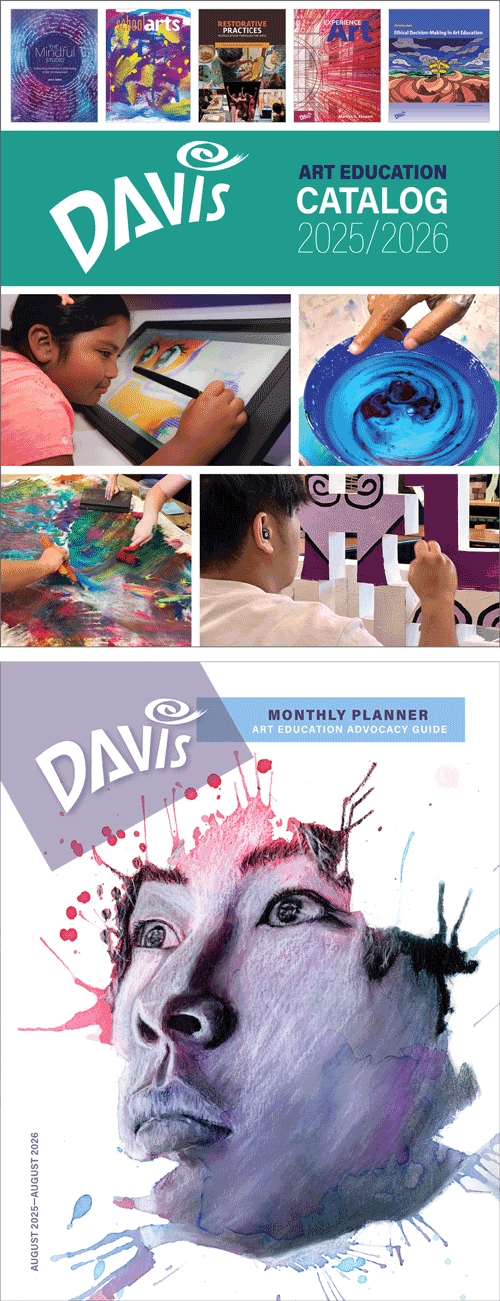Artist Birthday: Shinsui Itō
As an artist associated with the shin hanga movement, Shinsui Itō incorporated Western elements of perspective and attention to sculptural form into his work. He also observed compositional aspects of traditional ukiyo-e style of the Edo Period (1615–1868). Like the landscapes of Hiroshige (1797–1858), Shinsui constructed space in horizontal layers.
Artist birthday for February 4th: Shinsui Itō (1898–1972, Japan)
Shinsui was a printer in the shin hanga (creative print) movement of the early 1900s.
 |
| Shinsui Itō, Before the Storm, 1920. Color woodblock print on paper, 12" x 8 ½" (30.5 x 21.6 cm). Image © 2025 Brooklyn Museum. (BMA-5433) |
A dominant vertical form creates a counterbalance to the overall horizontal nature of the landscape in Before the Storm. This print has also been called Rice Stalks for the horizontal bands of the plants in the middleground of the composition. Unlike his earlier bijin-ga (beautiful women) prints that were highly detailed with numerous contrasts in intricate patterns, the forms of Before the Storm are constructed a simple shapes with a lot of suggestion. The background corn forms are very similar to the misty, non-linear landscape forms in Hiroshige prints.
During the Meiji "restoration," (1868–1912), when the shogunate (military dictatorship) was abolished and power supposedly returned to the emperor, many artists studied Western art in earnest, some of them traveling to Europe. Some artists adapted completely Westernized styles (yō-ga, Western style), including adapting Western materials such as oil paint and canvas, and Western subjects. Other artists remained traditionalist with Nihon-ga, Japanese style, but adapted certain Western stylistic features such as perspective, chiaroscuro, and more plastic (sculptural) form.
Two Japanese print movements arose after the ukiyo-e style had more or less run its course during the Meiji period. An effort by groups of artists in the early 1900s to resurrect the spirit of ukiyo-e resulted in the shin hanga (new print) and sōsaku hanga (creative print) movements. Ukiyo-e persisted after the Edo Period, particularly in landscape and cityscape prints. The artists of the shin hanga movement, which flourished between 1915 and 1947, emphasized the traditional hierarchy of artist, woodblock carver, and publisher as separate entities in the process of producing prints. This was in contrast to the sōsaku hanga (creative print) artists who made sketches, drew the design, cut the woodblock and printed it themselves. Sōsaku hanga evolved as an idea in the 1890s, and is sometimes assigned the “starting date” of 1904 with publication of creative prints in Myojo magazine. Sōsaku hanga continues to this day.
Shinsui was born in Fukagawa, Tokyo. He was apprenticed in a Tokyo printing company at a very young age, and later became a pupil of Kiyokata Kaburagi (1878–1972), an influential nihon-ga painter and ukiyo-e print artist greatly influenced by shin hanga. A specialist in bijin-ga (beautiful women) prints, in later life he specialized in landscapes. One of his most highly respected series of landscapes, Eight Views of Lake Biwa, depicted views of Lake Biwa, the largest lake in Japan. He produced up until the time of his death.

Comments